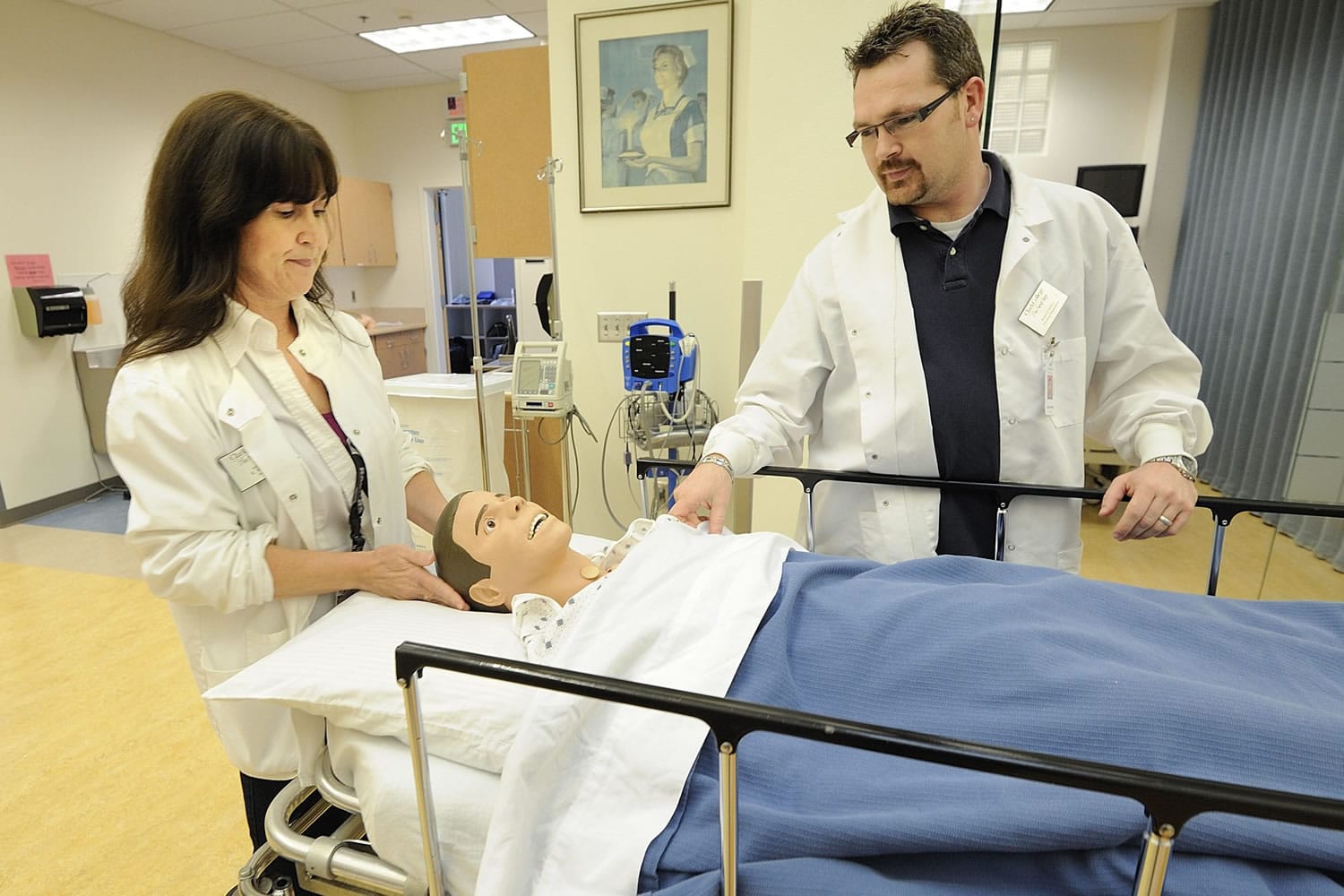The small hospital room was packed with charts, fluid bags and monitors.
John Arm lay in the bed, tubes emerging from his body. His chest heaved steadily under the sheet.
Then his eyelids fluttered open.
“Mr. Arm, are you awake?” Kati Kleiser asked loudly.
“Yes,” came the answer out of Arm’s half-opened mouth.
o What: Sim baby shower with demonstrations of the simulated patients.
? When: 5 to 8 p.m. Thursday, demonstrations at 6 and 7 p.m.
? Where: Nursing lab on the second floor of Clark College at WSU Vancouver, 14204 N.E. Salmon Creek Ave.
? Cost: Free.
? Parking: Park in lots marked Green 1, Green 2 and Orange 2.
Kleiser checked the patient’s pulse and, satisfied, moved on to other tasks.
The exchange was standard hospital procedure — except that John Arm is made of plastic, tubes and wires. He’s a SimMan, one of the high-tech simulated patients at Clark College’s nursing lab. The students call him Manny Quinn.
All of the lab’s training mannequins have names, except the latest comer — a little infant Sim, which on Thursday will be named in a baby shower ceremony that also celebrates the nursing department’s 50th anniversary. The department is one of the largest in the Northwest and has served as a model of high-tech teaching for nursing schools around the country.



